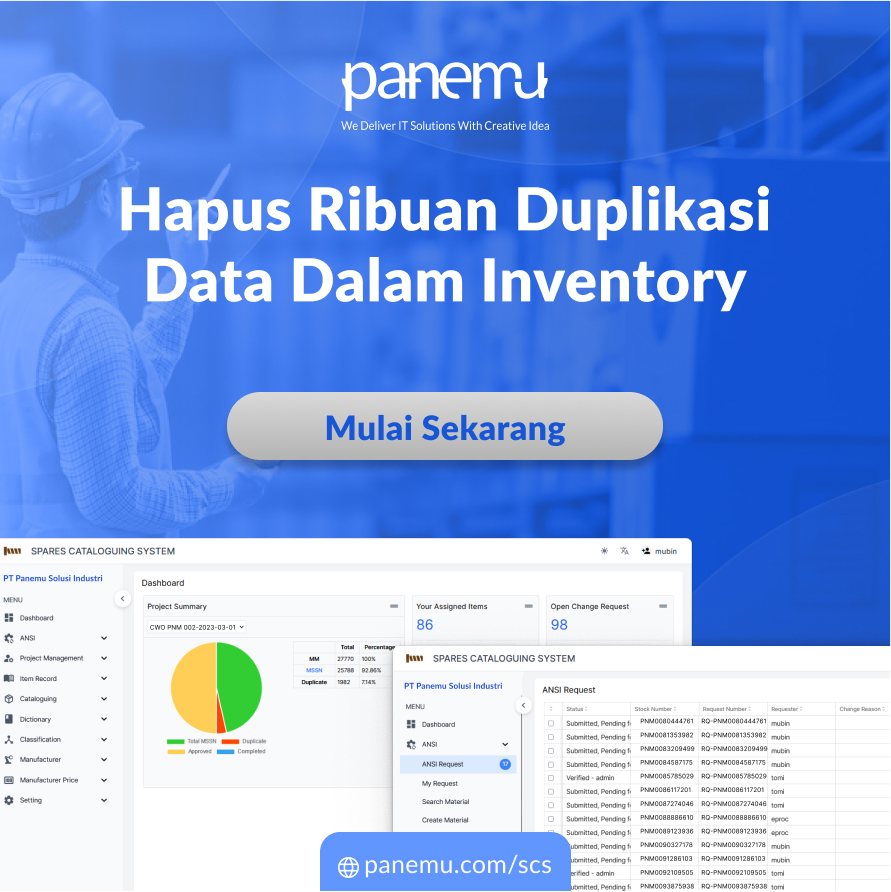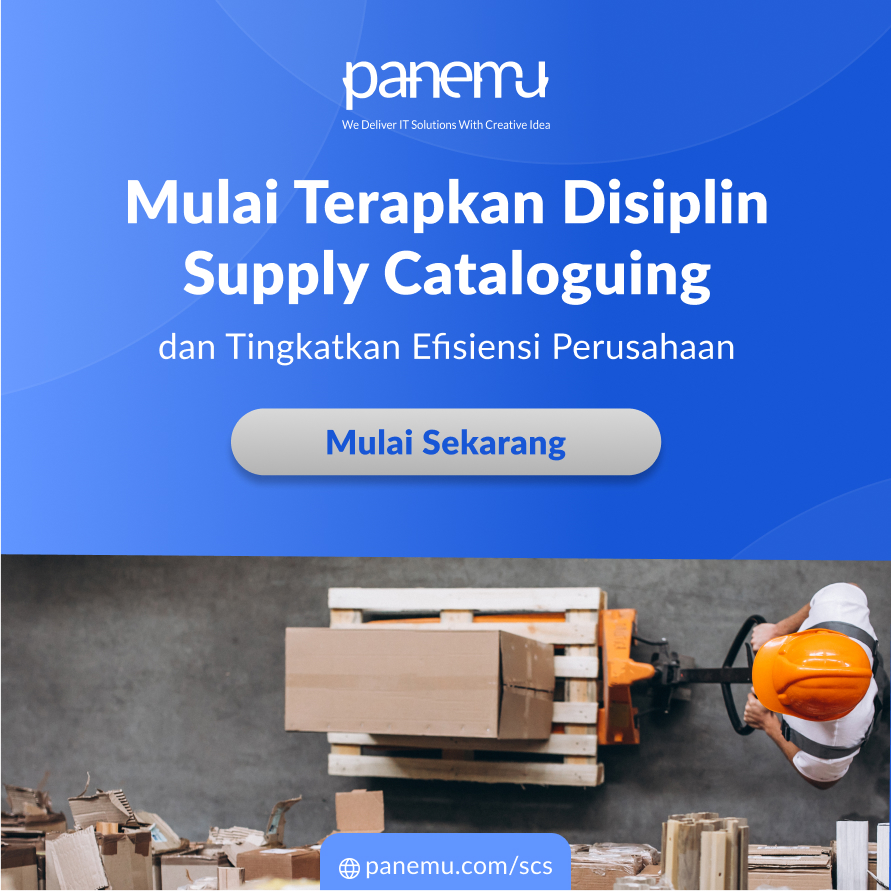Imagine a factory in Cikarang, the heart of West Java's industrial region, shutting down simply because of a mistake in a spare part delivery. There's nothing technically wrong—it's just that the material information system can't distinguish between "6205 ZZ steel bearings" and "6205 2RS stainless steel bearings." This isn't a fictional scenario. It's a reality experienced by many in the industry.
In an industrial world that demands speed and precision, chaotic material data can be a major obstacle to efficiency. This is why building a system is crucial.Cataloguing Master Data MRO (Maintenance, Repair, and Operations)— not just for neatness, but as a foundation for operational digital transformation.
Cikarang: High Complexity, Critical Need for Accuracy
Cikarang is known as home to hundreds of multinational factories in the automotive, electronics, food, and heavy manufacturing sectors. All have one thing in common: a heavy reliance on precision spare parts and maintenance systems. Unfortunately, the biggest challenge isn't always the spare parts themselves, but the processes involved.datathat describes them.
- Similar items described by different terms
- Double orders often occur because the item name is ambiguous.
- ERP is full of junk data that hampers the procurement process
This condition can only be resolved through a strong and contextual cataloguing strategy, adapted to the industrial rhythm in Cikarang.
A New Way of Looking at Cataloguing: More Than Just a List of Items
Cataloging master data isn't just about grouping items into a list. It's the foundation for accurate decision-making and intelligent automation. Let's break down the approach in more depth:
1. Functional Observation: Identify Problems from the Field
Before discussing systems and templates, the first step is to directly observe how data is used on the production floor and in the warehouse. This helps identify gaps between the ideal system and the reality on the ground.
2. Design a Description Template Based on Industrial Logic
Description templates must be tailored to technical requirements: from the Noun-Modifier-Attribute format, to structuring based on international standards such as UNSPSC, eCl@ss, and ISO 8000. In the manufacturing sector, templates for electric motors, actuators, and industrial filters can be very different, and that must be mapped from the start.
3. Implement an Adaptive and Universal Codification System
Codification is the most strategic part of cataloging. It not only provides a unique identity but also establishes a logical data hierarchy. This is where...NATO Codification System (NCS)provided a powerful inspiration: the NATO Stock Number (NSN)-based system that groups items based on function and technical specifications.
Although originally developed for the military, NCS principles—such as hierarchical classification, standardized attribution, and cross-system interoperability—can be applied to civilian industries, including in dense manufacturing environments like Cikarang.
4. Validation and Enrichment: Bring Data to Life with Context
Once the data is codified, the next step is to enrich the technical description with data such as machine compatibility, technical parameters, dimensions, materials, and authorized vendors. The richer the data, the more accurate the maintenance and procurement processes.
5. Build Accessibility through Systems and Training
Organized data is useless if it can't be accessed or used properly. Therefore, integration with ERP systems (SAP, Oracle, Infor), CMMS, and e-Procurement is crucial. Furthermore, training warehouse staff, technicians, and procurement officers is integral.
Why Cikarang Must Move Now?
As all aspects of industry become more connected,regularity of material dataIt's no longer an advantage, but an absolute necessity. Cikarang is not just an industrial area, but a manufacturing ecosystem with an increasingly rapid digital pulse. Without clean data, an ERP system will simply become a catalog of digital chaos.
Some signs that your company is ready (or even overdue) for cataloging implementation:
- The frequency of procurement errors is increasing
- There are still many item descriptions that use the term free
- Stock is bloated but spare parts are always lacking when needed
- IT system migration is hampered by incompatible data structures
It's Time to Move from Random Data to Strategic Information
Cataloging isn't an administrative project, but a transformation of operational strategy. With a methodical approach, based on international standards, and tailored to the pace of the Cikarang industry, cataloging is a powerful tool for increasing efficiency and competitiveness.
Through servicesCataloguing ServiceFrom Panemu, you not only get data tidying services, but also amaterial information architecturewhich can be the main foundation for your industry's digital transformation.
Visit https://panemu.com/cataloguing-serviceto understand more deeply how this service can be directly applied in your industry context.
And for a digital system that's ready for your internal team to use, learn about the top features ofSaved Cataloguing System (SCS) through https://panemu.com/scs-key-feature.
Cikarang doesn't just need neat data. It needs intelligent systems — and that starts with how you name and manage every material you own.

